That means more men than not have at least faced the possibility of wearing glasses — and that’s not counting people who’ve considered “vanity” frames with non-corrective lenses.
This infrequently-discussed topic is relevant to most of us. Even if your goal is to minimize the effect of your glasses entirely and select the most unobtrusive frames possible, you’re going to need to think about what kinds of shapes blend in with your face and features and what kinds stand out. And for the man who uses his glasses as an active piece of the fashion ensemble — which we recommend — there’s even more to think about.
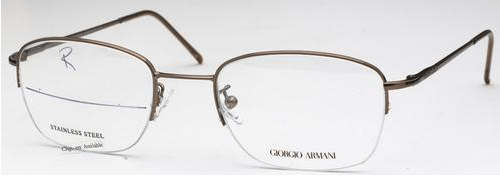
There’s a traditional school of thought that says glasses should be unobtrusive. The thinnest wire frames possible try to make the glasses vanish into your face and remove them from the visual impression altogether.
The problem is that that’s not really possible — you just become a man in thin glasses. That may not be the best look for every man’s face. On some, it may even take a strong profile and make it look less striking. More modern fashions have embraced the idea of glasses as an expression of style the same as a necktie or a pocket square. Shape and even color of frames can become a part of your visual identity. And for most men that’s going to be the right choice — though like any accessory, it’s important to keep the glasses in their place. They should complement your style, not define it. A pair of glasses that’s the most memorable thing about it risks becoming a novelty rather than a stylish accent. So exercise some restraint…
Glasses and Face Shape
Here’s the basic rule for the shape of your glasses: figure out what your face is lacking, and get frames that provide it. If you have a very angular face with lots of lines and planes you want rounded glasses to add some curves in there. If you have a soft face with curving features you’ll do better in straight or angled glasses. That’s the basic paradigm. Within it, there are some basic dos and don’ts for the various shapes we see faces in:
Glasses for Round Faces
To really be considered “round” a face needs to be about the same width and height, with a curving chin and cheeks. Something angular and slimming is your best look for a round face. Flat, rectangular lenses will make your face appear longer and thinner, particularly if they sit high on your face. A little bit of a “butterfly” taper — where the edges of the lenses closest to your nose are shorter than the outer edges — can work, but the corners should be squared off rather than rounded. Thick frames look a little clunky on a round face, so keep the actual material thin.
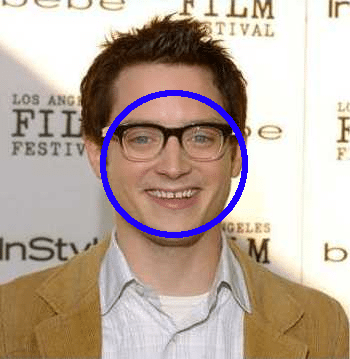
Elijah Wood: round face, round glasses, just a little bit goofy-looking. It's his thing.
A square face is similar to a round face in that it’s about equal in width and height. The features are more angled, with a broad chin and strong jaw squaring the shape off. Men who want to soften their impression up a little can wear rounded lenses. If you like the strong profile and don’t want glasses to make you look imposing, squared-off shapes can still work, but be sure the lenses are large and about even in height and width. Narrow, rectangular lenses on a broad, square face will make you look like you have a permanent squint rather than a steely-eyed determination. The frames should stay slim — thick, dark frames give a square face an overpowering impression that will draw away from the rest of your appearance.
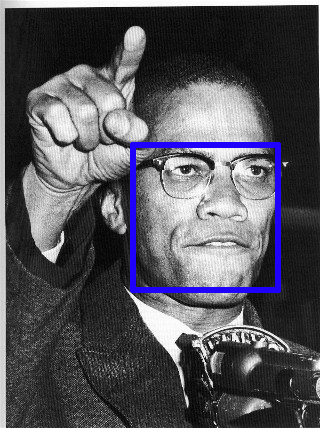
Malcolm X set a style for generations with rounded-square lenses on a square face. Note the thin wire around three sides.
Oval faces are the universal blood type of eyewear. They work well with most styles as long as you avoid the extremes. An oval face is taller than it is wide, with a rounded chin and high cheekbones, and it can wear either squared-off frames or curving ones. The lenses can be narrow or wide, though too square or circular a lens (where the height and width are close to the same) may look a little clunky for your narrow face. A thicker frame can add definition to your face — just be careful not to get anything so heavy that it overpowers your actual features.
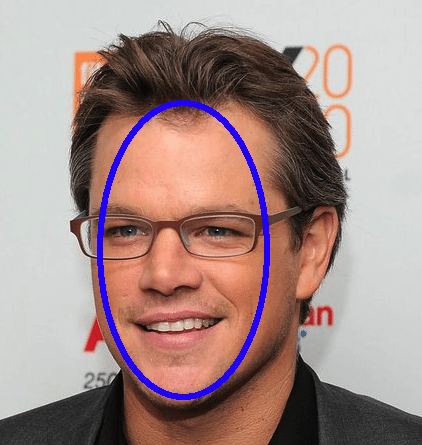
Matt Damon, like many oval-faced men, can look good in just about anything.
Narrow cheekbones and a small chin look very pretty in photos, but they’re sort of a pain to fit glasses for. You can take a lot of the emphasis off a pointed chin by wearing lenses that are wider at the top than the bottom. A butterfly taper to the sides can help as well by bringing the attention in toward the center of your face. Stay away from anything too blocky or squared-off — it won’t work with the curves in your face’s shape. Ultra-narrow frames may look a little wimpy on a heart-shaped face, so don’t be shy about a thicker wire or plastic.
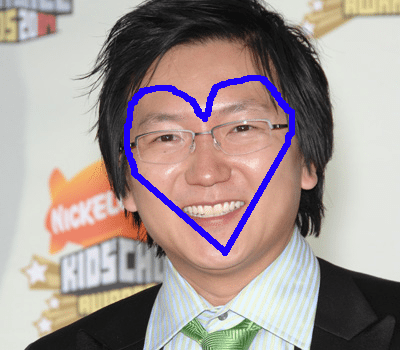
Heroes' Masi Oka in a set of thicker (but lightly-colored) frames.
Unless you have the money for multiple frames, you’re going to be stuck with the color of your glasses for a long time. Choose it carefully! Suit-and-tie men are limited by their formal dress code to the most traditional and neutral options: base metallic colors (gold and silver tones) or fine black are acceptable, but anything thick, plastic-looking, or brightly-colored is going to clash with business dress. More casually-dressed men have the option of adding colors, either as the solid base of the frames or as detailing. Thinner frames may be best for men looking to add color — a thick, brightly-colored frame is moving into the realm of novelty or costume gear.
Frame Sizing
If you’ve looked closely at the packaging (or sometimes the frame itself), eyeglass frames are sized with three numbers. In order, they represent the size of the lens, the size of the bridge across the nose, and finally the length of the temples (the hooks that go over your ears). Unfortunately, these measurements can’t take the thickness or shape of the wires into account, so one set of frames may feel much more comfortable than another with identical measurements. Lighter, thinner frames will generally sit more comfortably and allow a closer fit. Large, heavy frames may need to be sized looser than you are accustomed to.
Frame Materials
There are dozens of different chemicals and alloys used to make eyeglass frames. Plastics and nylon-based composites are usually used for brightly-colored glasses, though painted metals are also available. Zylonite (sometimes called “zyl”) is lightweight, affordable, and available in just about any color you can think of. Higher-end sports glasses can be equally colorful, but are made from more flexible nylon materials. Titanium and titanium alloys are popular metals for their light weight and flexibility. Be cautious of cheaper blended metals if you have sensitive skin — most alloys used for eyeglass frames include nickel, which some people have a contact allergy. Aluminum frames are cheap, but not very durable.
Vanity Glasses
Some men just look better in glasses. If you think you’re one of them but you don’t happen to need eyeglasses, there are “vanity frames” or “costume glasses” available that have plain window glass inside the frames. They have no effect on your vision, other than the occasional reflective flare or fogging issues.
If glasses really seem to make a noticeable difference for the better, you should certainly be open to the idea of non-prescription glasses — it’s no different from any other bit of jewelry or accenting that you might add to suit your personal taste — but be prepared to pay a reasonably steep price. Frames are usually priced with the expectation that most customers have insurance covering part of their costs. As a man with healthy vision, you’ll be footing the whole bill.

No comments:
Post a Comment